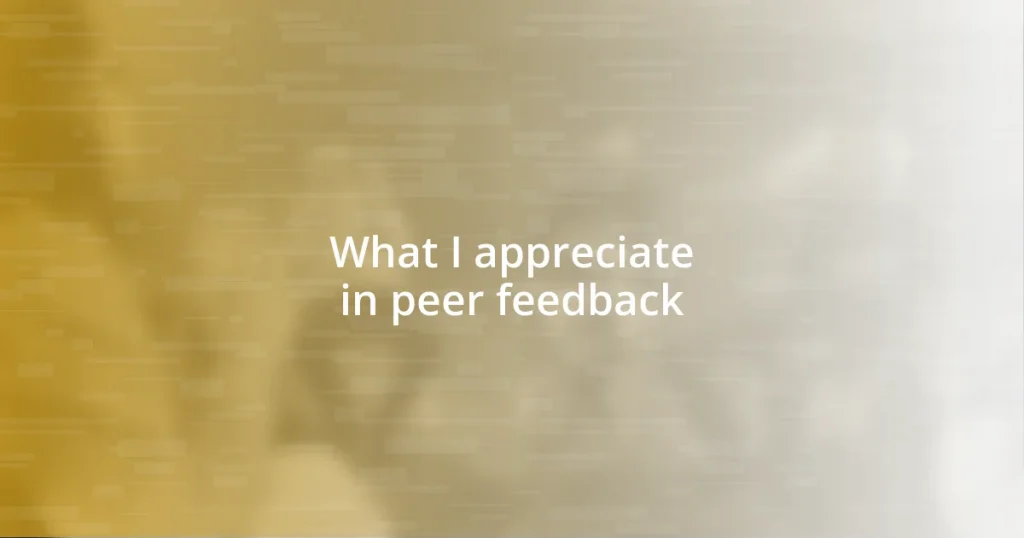Key takeaways:
- Peer feedback fosters growth by enhancing self-awareness, critical thinking, and collaboration, turning critiques into valuable learning opportunities.
- Giving and receiving feedback effectively involves specificity, a positive tone, and a mindset geared towards mutual improvement and trust-building.
- Incorporating feedback into practice leads to measurable growth, with specific goals and reflections on performance that transform insights into actionable change.
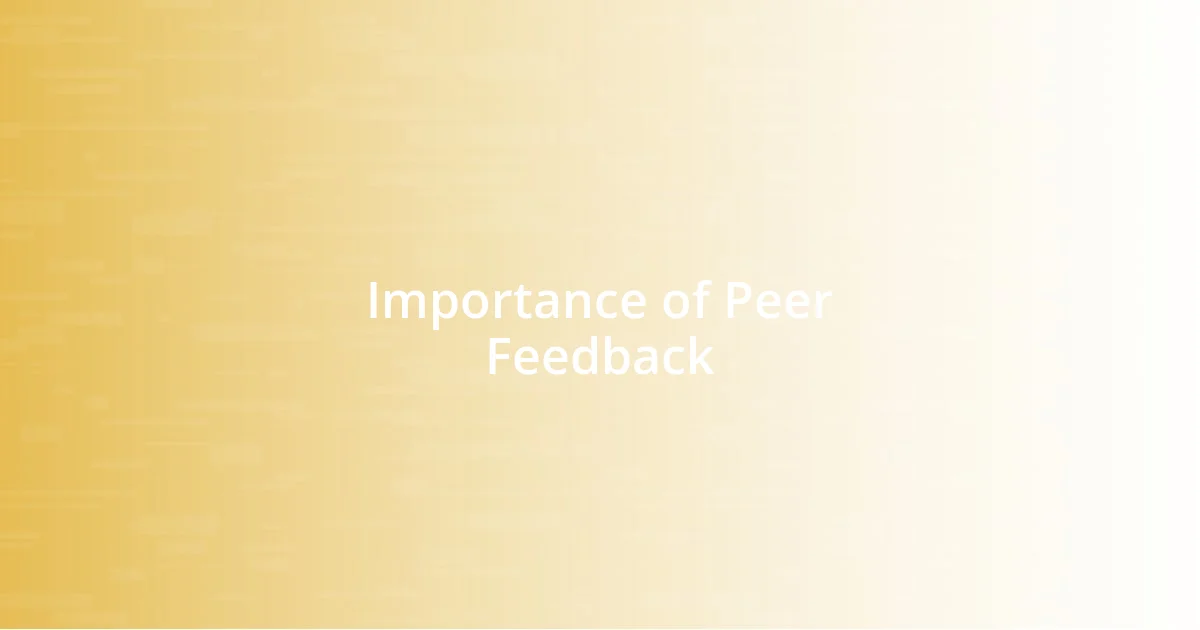
Importance of Peer Feedback
Peer feedback is invaluable in fostering growth and development. I remember a time when a colleague pointed out the tone I used in a presentation. At first, I felt defensive, but after reflecting on the feedback, I realized it opened the door to deeper connections with my audience. Isn’t it fascinating how sometimes the toughest feedback can lead to the greatest breakthroughs?
Moreover, peer feedback creates a sense of community and collaboration. When we share our insights and experiences, we’re not just critiquing each other; we’re building a support network. Have you ever noticed how sharing challenges with others can make them feel less daunting? I know I have, and it’s this camaraderie that cultivates a dynamic learning environment.
Finally, embracing peer feedback can significantly enhance our critical thinking skills. I often find myself questioning my own assumptions when I receive constructive critiques. Isn’t it remarkable how stepping outside our own perspectives can lead to more well-rounded insights? Engaging with diverse viewpoints not only enriches our work but also encourages a culture of continuous improvement.
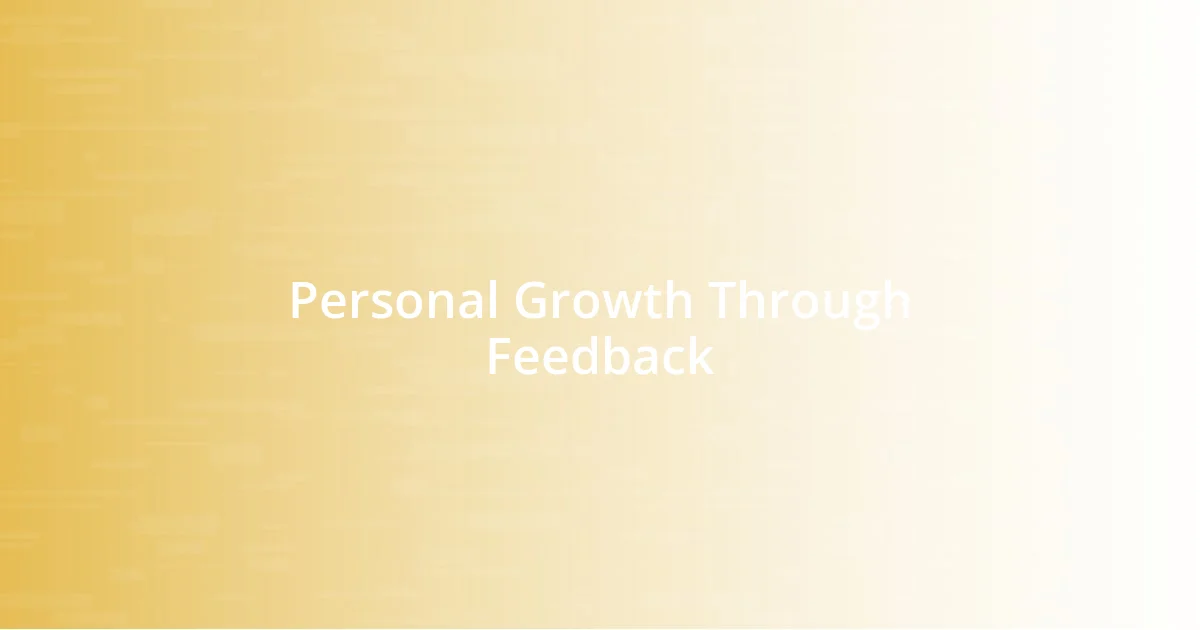
Personal Growth Through Feedback
Feedback has a unique way of challenging us. I remember a specific instance when a peer suggested that I simplify my reports. Initially, I felt my expertise was being undermined, but as I pondered over his words, I began to see how clarity could significantly impact my audience’s understanding. This realization not only transformed how I present information but also boosted my confidence in articulating complex ideas more effectively.
Consider the following aspects when reflecting on personal growth through feedback:
- Increased self-awareness: Feedback encourages us to confront blind spots, helping us understand how our actions are perceived by others.
- Enhanced skills: Regular input pushes us to refine our skills and adapt to new methodologies that we may have overlooked.
- Empathy development: Engaging with others’ perspectives allows us to foster deeper empathy, both in giving and receiving feedback.
- Resilience building: Learning to accept and act on criticism helps us develop thicker skin, making us more adaptable to challenges.
- Motivated growth mindset: Constructive criticism can inspire a yearning for improvement, driving us to seek further development opportunities.
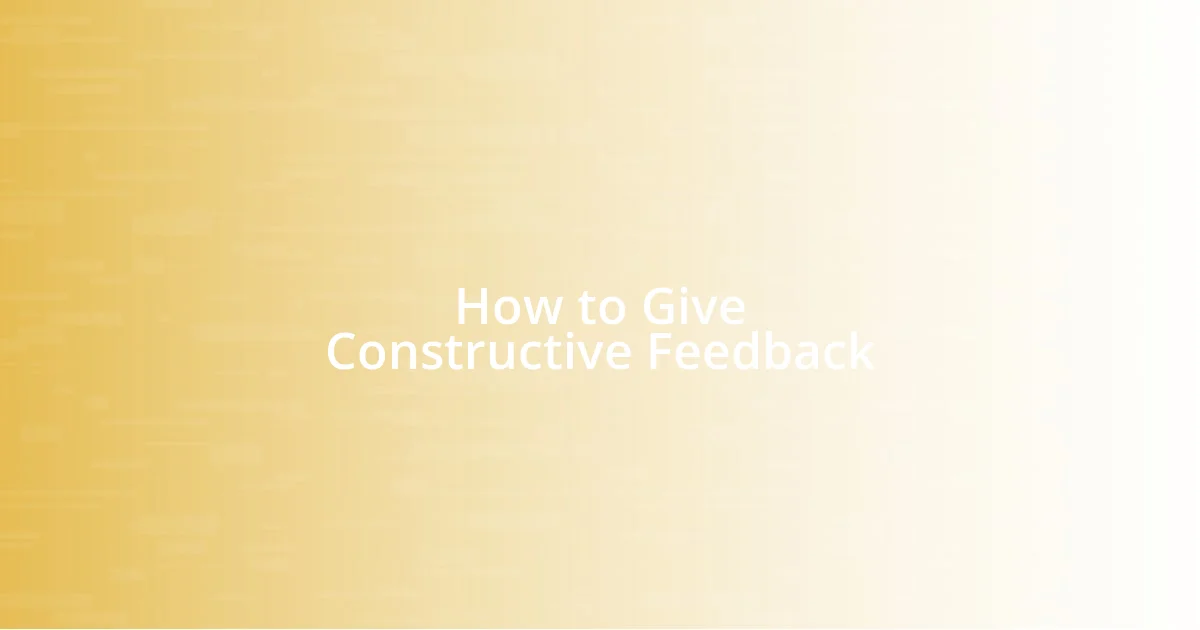
How to Give Constructive Feedback
Giving constructive feedback isn’t just about pointing out what someone did wrong; it’s about providing guidance for improvement. I had a situation where I complimented a colleague on their enthusiasm in a group project but indicated that the pace might need adjusting. By framing it positively, I found they were more receptive to my observations, and it sparked a productive discussion on how to balance energy with efficiency. Isn’t it interesting how the right words can turn a critique into a conversation?
When delivering feedback, specificity is key. Instead of saying “Good job” or “This needs work,” I learned the value of pinpointing exact areas of strength and improvement. For example, I once told a teammate, “Your analysis was thorough, but clarifying your main points could really enhance your message.” This approach not only makes the feedback actionable but also demonstrates that I respect their efforts and want to help them shine. Don’t you think details matter when it comes to genuine improvement?
Maintaining a supportive and positive tone is crucial when providing feedback. In my experience, framing critiques as opportunities for growth helps keep the atmosphere collaborative rather than adversarial. I recall giving feedback to a friend on their writing; I emphasized their strong voice while suggesting a few structural changes. This balance created a safe space for dialogue, making our exchange feel enriching rather than uncomfortable. How have you crafted your feedback delivery to foster trust?
| Constructive Feedback Approach | Traditional Feedback Approach |
|---|---|
| Focuses on growth and improvement | Emphasizes error correction |
| Encourages dialogue and collaboration | Often feels one-sided or critical |
| Uses specific examples and actionable insights | Relies on vague generalizations |
| Maintains a positive tone and respect | Can come off as harsh or negative |
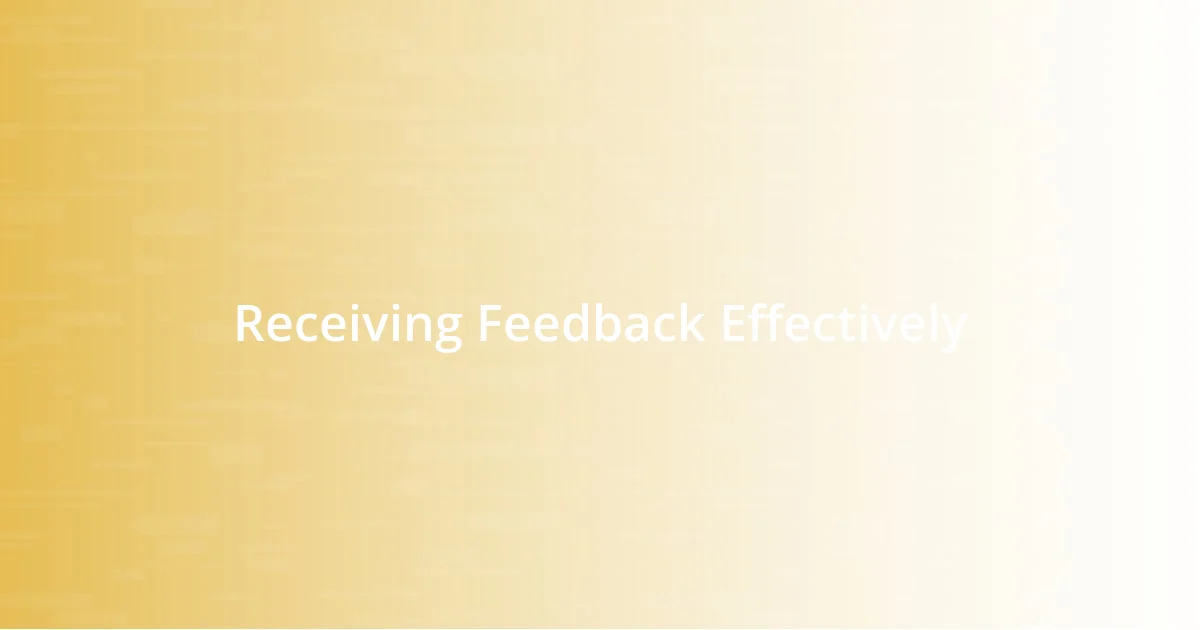
Receiving Feedback Effectively
Receiving feedback can be a transformative experience when approached with an open mind. I vividly remember a time when I received constructive criticism during a presentation. At first, my heart raced with defensiveness, but I decided to listen carefully to the suggestions. This decision opened the door to improvement; I revised my approach, ultimately leading to a more engaging delivery the next time. Isn’t it fascinating how one piece of feedback can shift our entire perspective?
Embracing feedback requires vulnerability, which can feel uncomfortable. I once shared a draft with a mentor, anticipating praise for my work. Instead, their honest feedback pointed out areas that were lacking. It stung initially; however, embracing that discomfort became a valuable lesson in humility. Learning to accept vulnerability not only strengthened my character but also inspired me to be more open in future collaborations. Have you ever found yourself caught off guard by feedback that was more helpful than hurtful?
To receive feedback effectively, it’s important to engage in active listening. I find that paraphrasing what the giver says can clarify the message and show my commitment to understanding. In a group project, when a team member critiqued my contribution, I repeated their key points back to them. This helped deepen our discussion and ultimately fostered a collaborative atmosphere. How do you ensure that you fully grasp the feedback shared with you? By practicing active listening, I believe we can transform feedback into a powerful tool for growth.
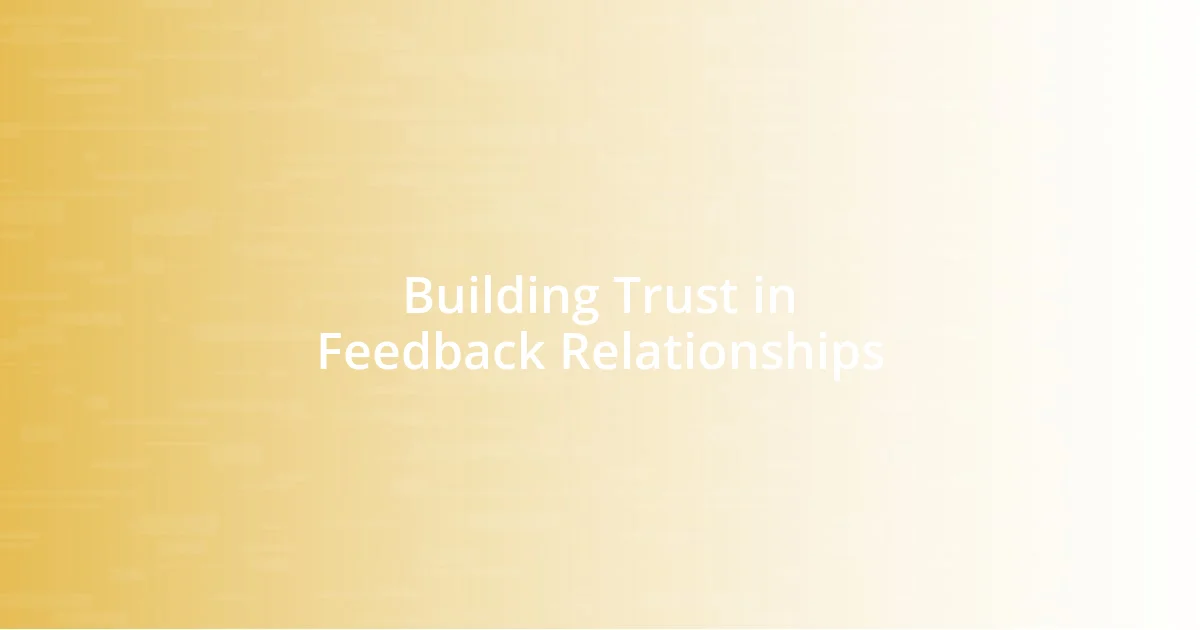
Building Trust in Feedback Relationships
Building trust in feedback relationships is crucial for creating a safe and productive environment. In my experience, openness and honesty pave the way for authentic connections. I recall a scenario where I hesitated to share my thoughts with a peer, fearing it might jeopardize our rapport. But when I finally communicated my observations with empathy, it not only strengthened our relationship but encouraged them to do the same with me. Isn’t it amazing how vulnerability can spark mutual trust?
It’s essential to approach feedback with a mindset of collaboration rather than competition. I’ve noticed that when I frame my feedback as a joint effort—”Let’s tackle this together”—it changes the dynamic entirely. For instance, during a project debrief, I addressed some challenges we faced, but I also encouraged my peers to share their solutions. This collective problem-solving approach fostered a sense of team unity and respect, making everyone feel valued. Do you think viewing feedback as teamwork enhances our connections?
Regularly checking in with your peers also builds trust over time. I’ve made it a habit to ask my colleagues how they prefer to receive feedback, which creates a personalized experience and shows that I care about their comfort. One time, after a particularly intense project, I suggested a casual coffee chat to discuss our lessons learned together. This allowed us to have an honest dialogue in a relaxed setting. How often do you take the time to nurture these relationships? The combination of ongoing communication and genuine care establishes a strong foundation for giving and receiving feedback effectively.
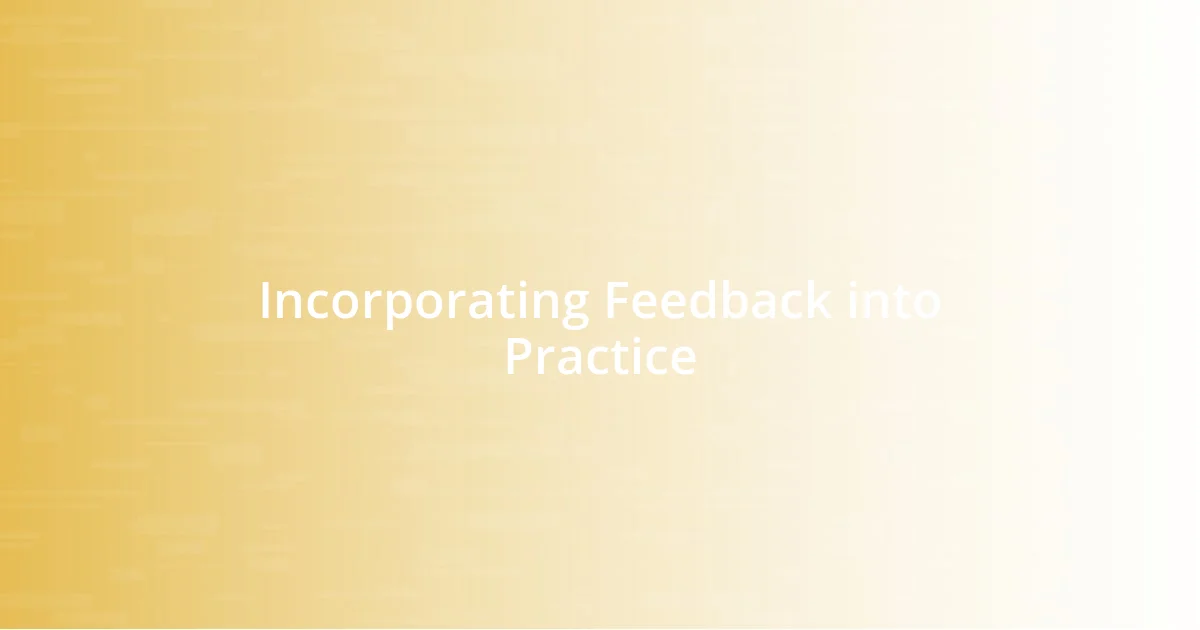
Incorporating Feedback into Practice
Incorporating feedback into practice is essential for turning insights into action. I remember when a colleague pointed out a recurring issue in my reports. At first, I felt a mix of embarrassment and frustration, but I sat down to reflect on their comments. I mapped out a plan to implement their suggestions in my next project. The process not only refined my writing skills but also instilled a sense of accountability. Have you ever taken a moment to really assess how feedback can directly shape your work?
The act of translating feedback into tangible changes can be enlightening. I once used a mentor’s advice on time management and set up a new scheduling system that mirrored their strategies. Initially, it was a tough adjustment, but gradually, I noticed a significant increase in my productivity and focus. The feeling of mastering a challenging area is invigorating, don’t you think? By embedding feedback into our daily routines, we invite growth in ways we might not have imagined.
Creating specific goals based on feedback can lead to remarkable improvements. I often find it helpful to break down my feedback into actionable steps. For example, after receiving critique on my presentation style, I sought out opportunities to practice speaking in smaller groups. Each session became a building block, enhancing my confidence and delivery. Isn’t it interesting how a clear plan can turn feedback into a stepping stone for success? Embracing this structured approach has transformed my perspective and underscored the true potential of feedback in my journey.
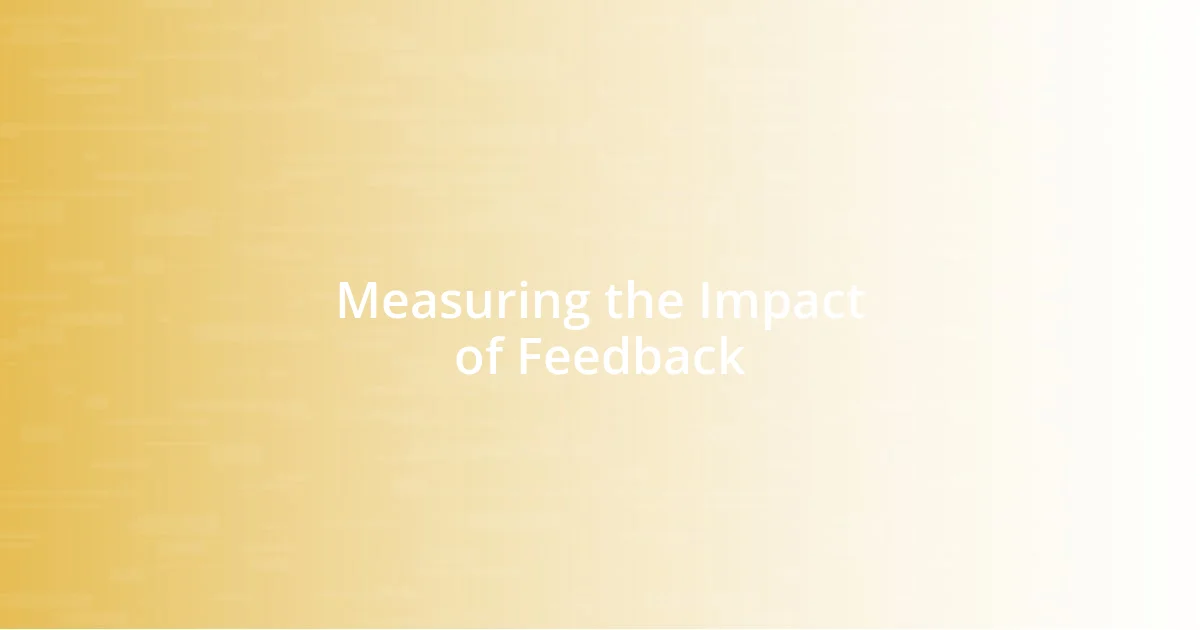
Measuring the Impact of Feedback
Measuring the impact of feedback is a crucial step in understanding its effectiveness. I’ve often found that reflecting on feedback sessions can unveil trends or common themes that I may have initially overlooked. For instance, after several reviews of my work, I noticed a frequent suggestion to improve my clarity. This prompted me to reevaluate my communication style. Have you ever pinpointed such patterns in the feedback you receive?
One of the most tangible ways I gauge feedback’s impact is by tracking my progress over time. I remember implementing a peer’s suggestion to incorporate clearer visuals in my presentations. After a few months, I revisited these presentations and could distinctly see how they resonated better with audiences. It was rewarding to witness this transformation; it showed me that feedback truly translates into growth. How do you measure the changes in your work after receiving feedback?
It’s fascinating how feedback can also lead to unexpected insights. After working on a team project, my peers shared their experiences of my contributions. I was surprised to learn that my collaborative techniques were fostering an open environment that encouraged more ideas. This reflection not only highlighted my strengths but also motivated me to refine those skills further. Have you ever been surprised by the positive effects of your contributions through feedback?










